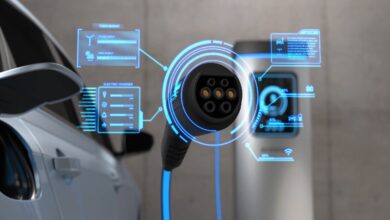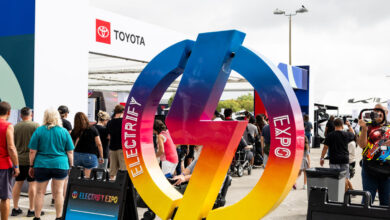Monadnock Ledger-Transcript – PREP Talks: Michael Nadeau – What you need to know about electric-vehicle tax credits

New and used electric vehicle (EV) prices are coming down, gas prices are on the rise, and more EV charging stations are coming to the region.
There has never been a better time to buy an EV, especially models eligible for tax credits. Those credits can be as much as $7,500, but taking advantage of them can be tricky.
The current EV tax credit rules are defined in the Biden administration’s Inflation Reduction Act (IRA) of 2022. Formally known as the Clean Vehicle Credit, it allows U.S. taxpayers who buy certain new or used EVs, including plug-in hybrid EVs (PHEV) and fuel cell electric models, to receive up to a $7,500 (new vehicle) or $4,000 (used vehicle) nonrefundable tax credit. Purchasers may apply that credit to the price of the car at the dealer or use it to reduce their federal taxes by the credit amount.
Since it’s a nonrefundable credit, the government won’t write you a check for the difference if your tax liability is less than the credit amount. The credit will also apply in the tax year that the EV is put into service, not the year you purchase it (unless they are the same).
The Clean Vehicle Credit for used EVs equals 30% of the sale price up to $4,000. For new EVs, the Clean Vehicle Credit has two main parts, each accounting for half ($3,750) of the full new EV credit.
The first requires that a minimum percentage of the critical minerals used in the EV’s batteries be extracted or processed in the United States or in a United States free-trade agreement partner country, or was recycled in North America. For 2024, that percentage is 50%; it will rise incrementally each year through 2027, when it will cap at 80%.
The second part requires that a minimum percentage of the EV battery components be manufactured or assembled in North America. For 2024 and 2025, that percentage is 60%; it rises to 100% by 2029. For both parts, the percentage is based on value, not volume. An EV might qualify for one part but not the other, leaving you with half the new EV credit.
That sounds complicated, but it’s up to the EV manufacturers to document the values of each tax credit component to the government. Once the government signs off on tax credit eligibility, those EVs are put on a list of qualified models. All you have to do is check to make sure that your vehicle is on the list, as explained below.
The government has set limits for taxpayers’ modified adjustable gross income to qualify for the EV tax credit:
— Single and married filing separately: $150,000 (for new EVs), $75,000 (for used EVs).
— Head of household: $225,000 (new), $112,500 (used).
— Married filing jointly: $300,000 (new), $150,000 (used).
You cannot claim the credit if you are buying the EV for resale, and you must buy through a dealer who participates in the IRS’s Clean Vehicle Credit program. You cannot claim the credit if you are a dependent on someone else’s tax return. If you’ve claimed a used Clean Vehicle Credit within the past three years, you are not eligible if you purchase another used EV.
The Clean Vehicle Credit program sets rules for vehicles’ credit eligibility. New or used EVs must be assembled in North America (United States, Puerto Rico, Canada and Mexico) and sold for use primarily on U.S. roads. All EVs, new or used, must have a battery capacity of at least seven kilowatt-hours. EVs with batteries manufactured by “a foreign entity of concern,” meaning China, are not eligible.
Used EVs must be a model year at least two years earlier than the purchase year to be eligible and cost no more than $25,000. EVs sold after Aug. 16, 2022 (the date the IRA became law) that have already had the tax credit transferred to the previous owner are not eligible, as the used vehicle credit may be applied only once to each eligible EV.
As explained above, some new vehicles will only partially meet the requirements for the EV tax credit, depending on the composition of their batteries and where those batteries were manufactured or assembled.
The list of eligible EV models changes as the government approves them for the program. You can use a tool for finding eligible models at fueleconomy.gov/feg/tax2023.shtml. The list will appear after you select an expected delivery date.
Your purchase of an eligible EV qualifies only if you buy from a dealer and that dealer reports the information that the IRS requires, which includes:
— Dealer name and taxpayer ID number.
— Buyer’s name and taxpayer ID number.
— Sale date and price.
— Total amount of the allowable credit.
— Vehicle identification number.
— Battery capacity.
The dealer must submit this information to the IRS whether you take the credit amount off the sale price or use it to reduce your tax liability. You will lose the credit if the dealer does not give the IRS this documentation.
If you decide to use the credit to reduce your tax liability, you will need to file Form 8936, Clean Vehicle Credit (irs.gov/forms-pubs/about-form-8936), with your return.
Michael Nadeau is a member of the Community Power Committee.



